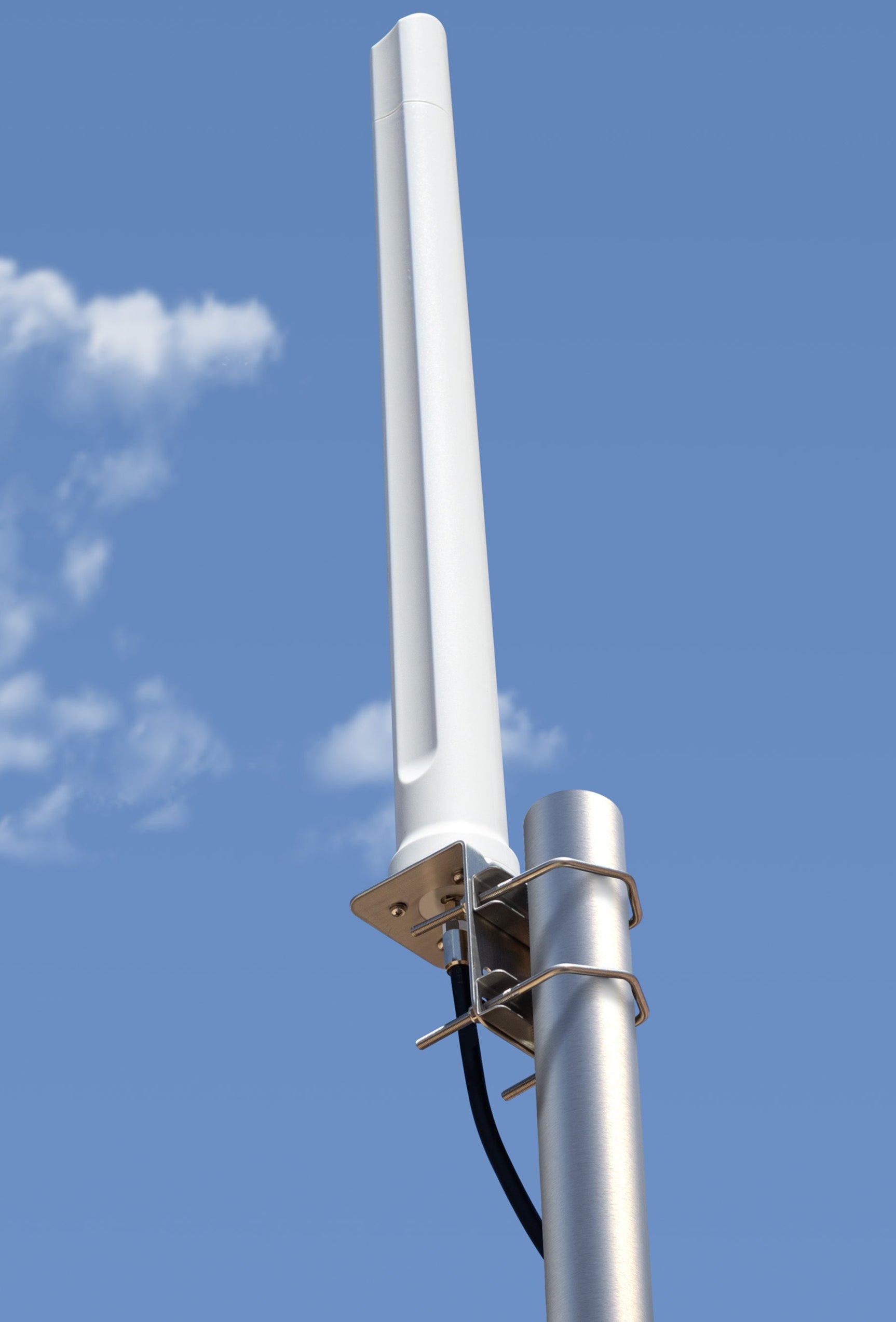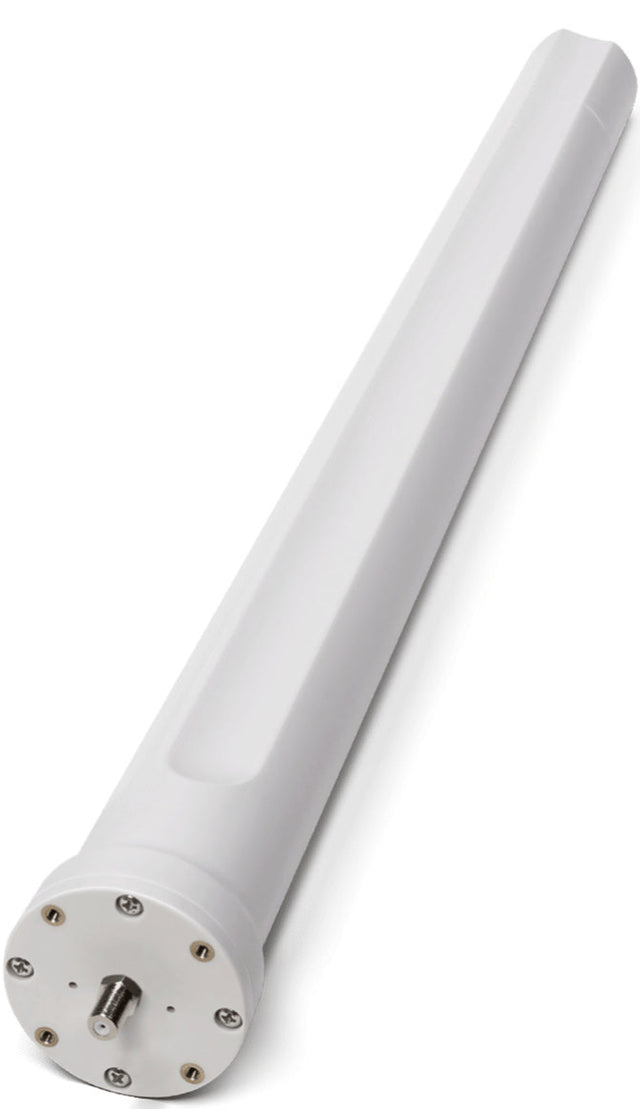Wilson High-Gain Omni Antenna | 310001
Your Order Includes:
- 90-Day Returns
- Lifetime Tech Support
- 2-Year Warranty
- Lowest Price Guarantee
How to Choose the Right Antennas for Your Booster
Outside Antennas:
- Yagi Directional Antenna: This antenna is more powerful because it focuses on sending and receiving signals in one direction. It works best when there are no major obstacles blocking its path to the cell tower. It's not ideal for areas with large obstructions like hills or buildings.
- Omni Antenna: This antenna sends and receives in all directions, so it's better for hilly areas or if you need to support multiple carriers with towers in different directions. It doesn’t need to be aimed, but it also isn’t as strong as the Yagi antenna.
- High Gain LPDA Antenna: Perfect for areas with very weak signals, this antenna significantly boosts signal strength. It needs a clear line of sight to the cell tower and requires a sturdy mount because of its size.
- High Gain Omni Antenna: Similar to the standard omni, this antenna receives signal from all directions but delivers significantly higher gain across all supported bands. It’s a much stronger option when you want more inside coverage than a standard omni will provide, especially in areas with weaker outside signal.
Inside Antennas:
- Panel Antenna: Can be placed on walls or ceilings and directs the signal towards a specific area. This antenna is great for homes and tall ceilings in buildings.
- Standard Dome Antenna: Designed to be mounted on the ceiling, this antenna spreads the signal evenly throughout the area. It's best suited for drop ceilings or spaces where cables can be run above the ceiling.
- Ultra-Thin Dome Antenna: This slim antenna also mounts to the ceiling, but is much is less noticeable. It's much stronger than a standard dome antenna, making it a great choice for places where both looks and signal strength are important.
Tips for Choosing:
- Choose Omni Antennas for general coverage with no aiming required.
- Choose Directional Antennas (Yagi or LPDA) when you can point directly at a cell tower and need stronger signal and more inside coverage.
- Interior Size Considerations: One antenna per 750-1,500 sq ft in homes, or 1,500-2,500 sq ft in open spaces like offices and warehouses.
Product Overview
Product Overview
The Wilson High-Gain Omni Antenna | 310001 is built to improve cellular signal reception in challenging environments. It’s especially useful when you're dealing with unreliable coverage at the edge of a network — whether that’s at a rural property, a field-based IoT site, or an industrial building relying on LTE or 5G for connectivity.
This antenna uses a high-gain, omnidirectional design to pull in signals from all directions. That makes it a smart choice in locations where tower direction is unclear, or when working with equipment that moves between carriers or frequencies. It’s commonly used with fixed wireless routers, signal boosters, and industrial gateways where steady data performance is critical.
Engineered for wideband performance, it supports a broad range of frequencies — including 617 to 960 MHz for low-band LTE and up to 3.8 GHz for mid-band 5G. It delivers up to 9 dBi of gain depending on the band, helping to improve signal strength even in fringe areas.
The antenna’s weather-resistant housing is designed for year-round outdoor use. It mounts easily to a rooftop, pole, or exterior wall using the included hardware and connects via a standard N-type female connector.
Whether you're setting up reliable data service in a rural area or stabilizing connections for a smart system in the city, the 310001 offers a tough, flexible solution for capturing cellular signals in the real world.
Product Highlights & Benefits
Product Highlights & Benefits
In the Box
In the Box
Coverage Area & Supported Carriers
Coverage Area & Supported Carriers
Installation Overview
Installation Overview
Product Documents
Product Documents
Specifications
Specifications
-
SKU310001
-
UPC810005965132
-
ConditionNew
-
Warranty2 Years
-
Impedance
-
Gain (Up/Down)
-
Antenna PolarizationVertical
-
ConnectorN-Female
-
Antenna Max Power
-
Antenna Mount
-
Antenna signal Pattern
-
Antenna VSWR
-
Dimensions
-
Specific Frequencies Supported600-960 MHz, 1425-2700 MHz, 3400-3800 MHz



